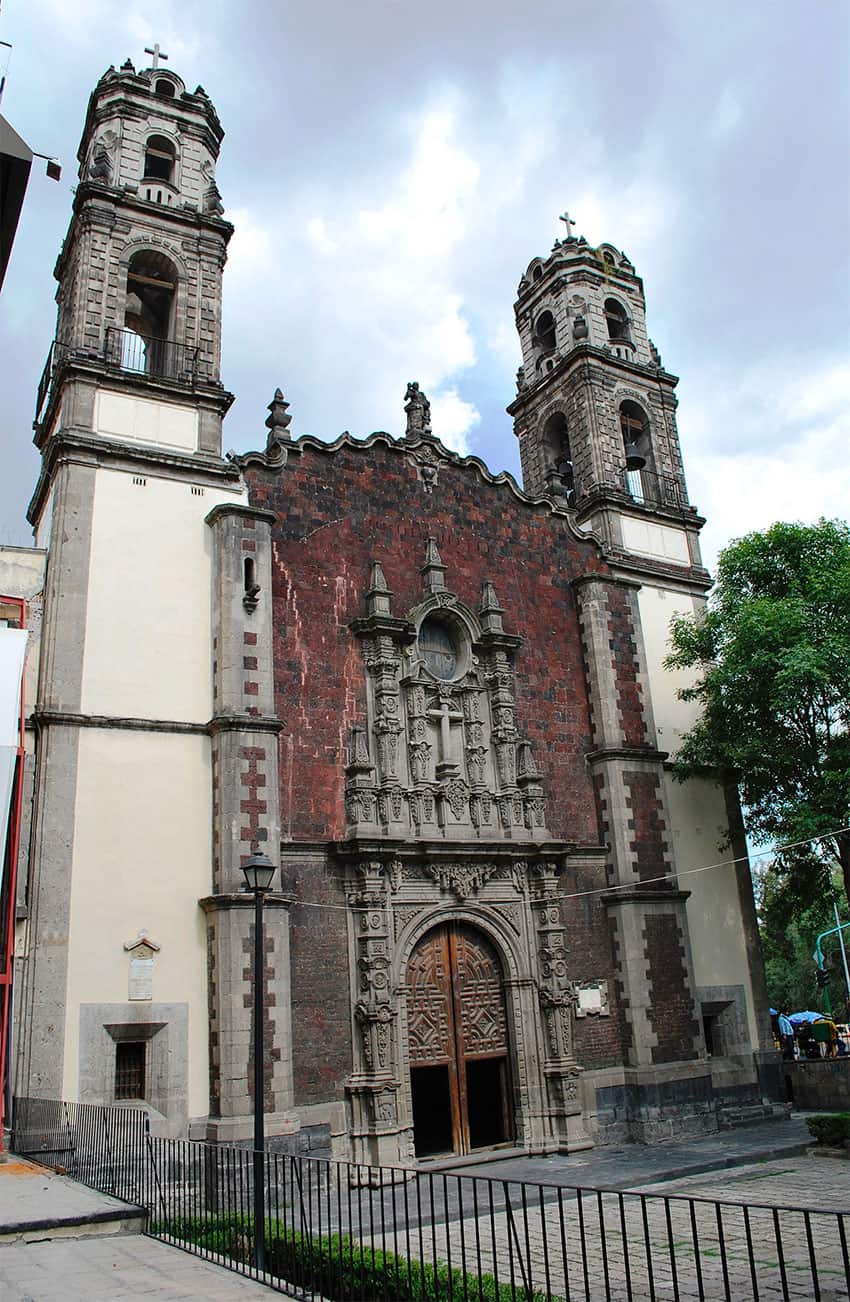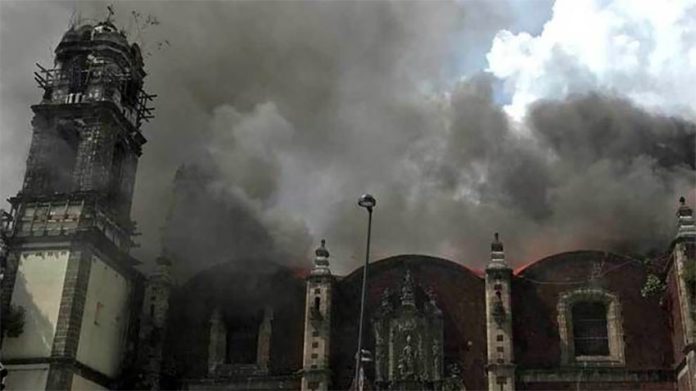A Mexico City court has ruled that the National Institute of Anthropology and History (INAH) must immediately begin repairs to a 16th-century church that was damaged during two earthquakes in 2017 and two fires last August.
Located in the historical center of Mexico City, the church of the Santa Veracruz, the capital’s second oldest church, was severely damaged by two blazes on August 31 that were allegedly caused by the lighting of a fire by homeless people taking shelter inside.
Stained-glass windows, the pipe organ, paintings and the bell tower were charred or destroyed in the blazes. The church also sustained structural damage in the September 7 and 19, 2017, earthquakes that shook central and southern Mexico, toppling countless buildings and killing hundreds. It was also damaged in the massive earthquake that rocked Mexico City in 1985.
The court ruling came in response to an injunction request filed by Álvaro Rocha Arrieta, a member of a citizens’ collective whose main aim is to defend Mexico’s historical and cultural wealth.
“It’s not about whether they want to or can, there is now a legal order and they have to get to work at INAH. We understand that money is scarce but something has to be done. The money will have to come from somewhere,” he told the newspaper Reforma.

INAH said earlier this month that it hasn’t begun work on the damaged bell tower because it lacks resources.
“It’s a very complex job due to the height and the … instability of the tower. … We haven’t been able to do it. It’s part of what will be done with the money that the insurance company pays out,” said INAH official Antonio Mondragón.
Although the damage from the fires was severe, an INAH assessment determined that most of it can be repaired.
Rocha said he is prepared to give INAH some time to begin the repair work but warned that if it is unduly slow in complying with the court order he will report the violation and seek the imposition of administrative or even criminal sanctions.
“The first step is to demand compliance with the measure handed down by the district judge,” he said, adding that he feared the church, which was closed to the public in 2017 after INAH deemed it “a high-risk and uninhabitable property,” could collapse.
“I’m not an architecture expert or anything like that but it’s obvious that this church, partly due to the earthquakes in 2017 and neglect, is at grave risk,” Rocha said.
Xavier Guzmán Urbiola, a historian and architect, told Reforma that the church of the Santa Veracruz has been neglected for the past 50 years due to a lack of money. He also said that construction of Line 2 of the Mexico City Metro destabilized the building and work to stabilize it again was never completed.
Guzmán said that repairs are possible, asserting that the technical work required is “fairly easy” but acknowledged that INAH needs access to resources to be able to do it.
Source: Reforma (sp)
